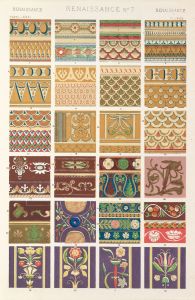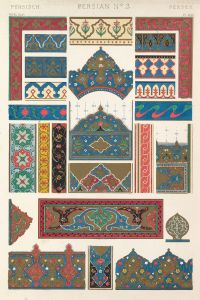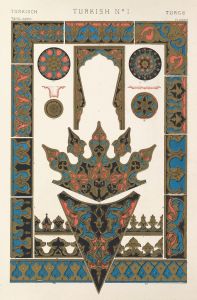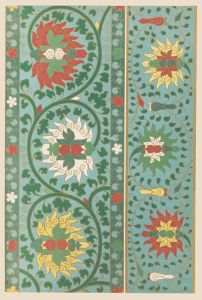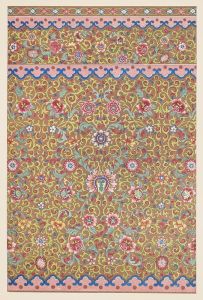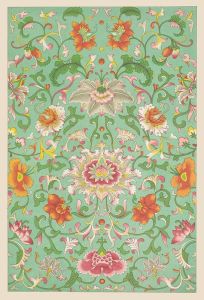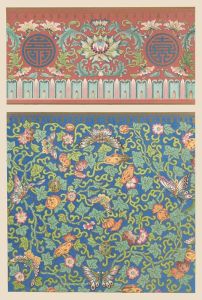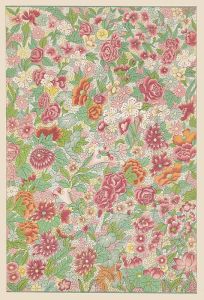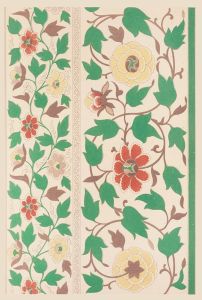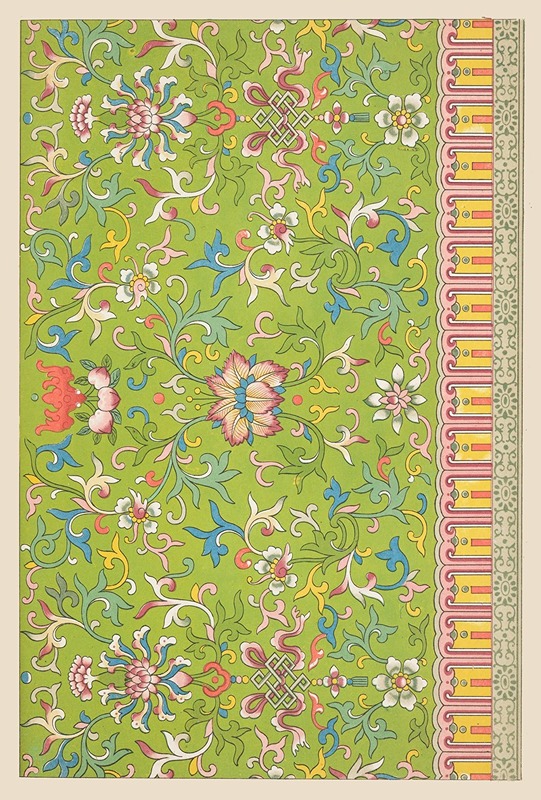
Examples of Chinese ornament, Pl.60
A hand-painted replica of Owen Jones’s masterpiece Examples of Chinese ornament, Pl.60, meticulously crafted by professional artists to capture the true essence of the original. Each piece is created with museum-quality canvas and rare mineral pigments, carefully painted by experienced artists with delicate brushstrokes and rich, layered colors to perfectly recreate the texture of the original artwork. Unlike machine-printed reproductions, this hand-painted version brings the painting to life, infused with the artist’s emotions and skill in every stroke. Whether for personal collection or home decoration, it instantly elevates the artistic atmosphere of any space.
"Examples of Chinese Ornament, Pl.60" is one of the plates from the influential design book "The Grammar of Ornament," authored by Owen Jones and first published in 1856. Owen Jones was a British architect and designer known for his work in color theory and ornamental design. His book aimed to provide a comprehensive collection of decorative arts from various cultures, serving as a source of inspiration and reference for designers and architects of the time.
"The Grammar of Ornament" is divided into several sections, each focusing on the ornamental styles of different cultures, including Egyptian, Greek, Roman, Arabian, Turkish, Indian, and Chinese, among others. Plate 60 is part of the section dedicated to Chinese ornamentation, showcasing the intricate and symbolic designs characteristic of Chinese art.
Chinese ornamentation is renowned for its use of symbolic motifs, vibrant colors, and intricate patterns. These designs often incorporate elements from nature, such as flowers, birds, and animals, as well as geometric patterns and calligraphic elements. The motifs are not merely decorative; they often carry cultural and philosophical significance, reflecting the values and beliefs of Chinese society.
In "Examples of Chinese Ornament, Pl.60," Jones presents a selection of these motifs, highlighting the elegance and complexity of Chinese design. The plate likely includes examples of traditional Chinese patterns, such as the use of dragons, phoenixes, and other mythological creatures, which are common in Chinese art and symbolize power, strength, and good fortune. Floral motifs, such as peonies and lotuses, are also prevalent, representing beauty, purity, and prosperity.
Jones's work was pioneering in its approach to documenting and categorizing ornamental designs from around the world. By including Chinese ornamentation in his book, he acknowledged the rich artistic heritage of China and its influence on global design practices. His documentation provided Western audiences with a greater appreciation for the diversity and sophistication of Chinese art.
"The Grammar of Ornament" had a significant impact on the design world, influencing the development of the Arts and Crafts Movement and the Art Nouveau style. Designers and architects drew inspiration from the book's plates, incorporating elements of Chinese ornamentation into their work, which contributed to a broader understanding and appreciation of non-Western art forms.
Overall, "Examples of Chinese Ornament, Pl.60" serves as a testament to the enduring beauty and complexity of Chinese decorative arts. Through his meticulous documentation, Owen Jones played a crucial role in bridging cultural gaps and fostering a greater appreciation for the artistic traditions of China among Western audiences.





